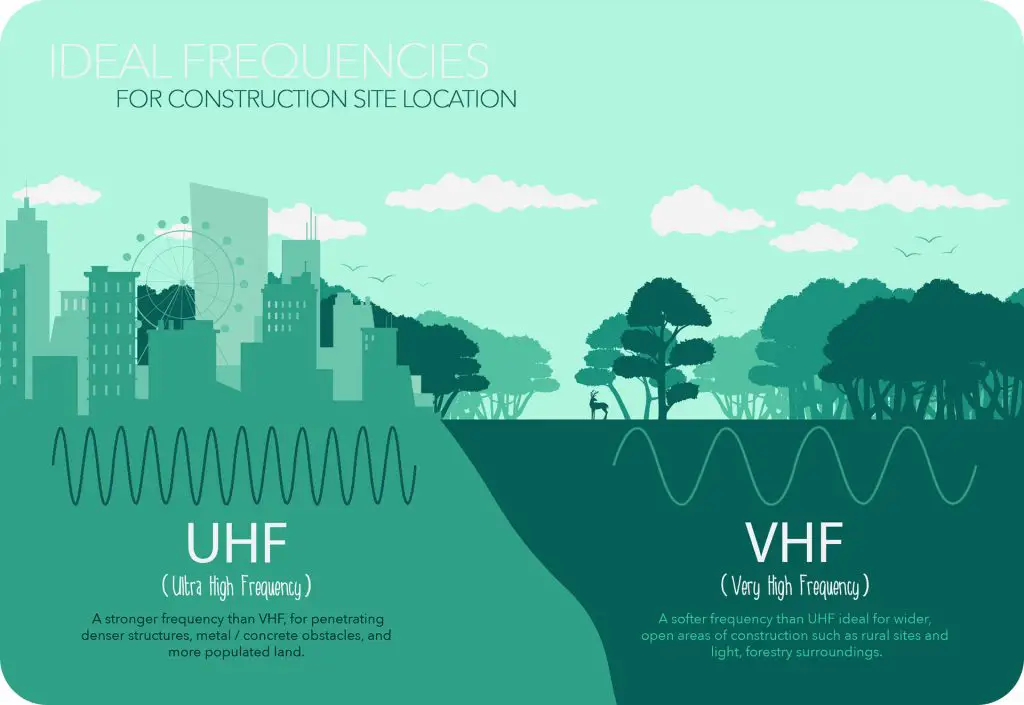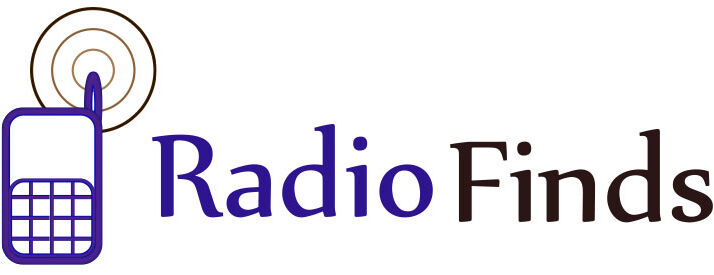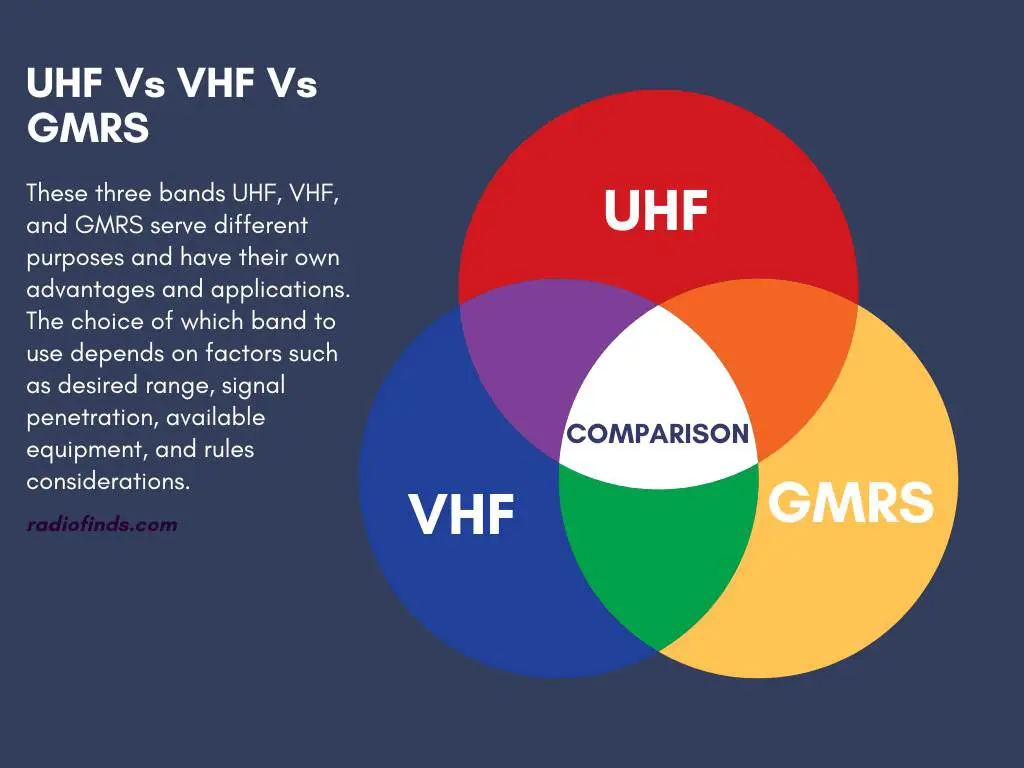UHF Vs VHF Vs GMRS
Three popular acronyms dominate the airwaves in wireless communication: UHF, VHF, and GMRS. These three technologies have revolutionized how we stay connected and informed, each with unique advantages and applications.
UHF (Ultra High Frequency) offers impressive signal penetration and is used for television broadcasting and mobile communication.
On the other hand, VHF (Very High Frequency) shines in long-range communication, making it ideal for marine, aviation, and FM radio broadcasts.
Lastly, GMRS (General Mobile Radio Service) caters to those seeking reliable and private communication for personal or professional use.
Join me as we delve into the fascinating world of UHF, VHF, and GMRS and discover how they shape our modern communication landscape.
Comparison Table (UHF Vs VHF Vs GMRS)
Here is a table comparing UHF Vs VHF Vs GMRS channels with their corresponding frequencies:
| Channel | UHF Frequency (MHz) | VHF Frequency (MHz) | GMRS Frequency (MHz) |
| 1 | 462.5625 | 146.520 | 462.550 |
| 2 | 462.5875 | 146.535 | 462.575 |
| 3 | 462.6125 | 146.550 | 462.600 |
| 4 | 462.6375 | 146.565 | 462.625 |
| 5 | 462.6625 | 146.580 | 462.650 |
| 6 | 462.6875 | 146.595 | 462.675 |
| 7 | 462.7125 | 146.610 | 462.700 |
| 8 | 467.5625 | 146.625 | 467.550 |
| 9 | 467.5875 | 146.640 | 467.575 |
| 10 | 467.6125 | 146.655 | 467.600 |
| 11 | 467.6375 | 146.670 | 467.625 |
| 12 | 467.6625 | 146.685 | 467.650 |
| 13 | 467.6875 | 146.700 | 467.675 |
| 14 | 467.7125 | 146.715 | 467.700 |
Please note that these channels and frequencies are commonly used in the United States, but regulations and available channels may vary in different countries or regions.
When operating radio equipment, it’s always important to check your location’s specific rules and licensing requirements.
UHF Frequency Range – Understanding UHF Frequencies
UHF (Ultra High Frequency) refers to radio frequencies commonly used for various communication purposes.
UHF frequencies typically range from 300 MHz (megahertz) to 3 GHz (gigahertz). This frequency range falls within the higher end of the radio spectrum.
UHF frequencies have several advantages, including shorter wavelengths and higher signal strength than lower frequency ranges. These characteristics allow UHF signals to travel shorter distances with better penetration through obstacles such as buildings and vegetation.
As a result, UHF frequencies are commonly used for applications like television broadcasting, wireless communication systems, cordless phones, walkie talkies, wireless microphones, and even RFID (Radio Frequency Identification) technology.
Due to its wide availability and versatility, the UHF frequency range has become a crucial part of modern communication systems.
However, it is essential to note that the specific frequency bands within the UHF range can vary across different regions and countries, as governmental agencies regulate them to avoid interference and ensure efficient use of the radio spectrum.
VHF Frequency Range – Understanding VHF Frequencies
VHF (Very High Frequency) refers to a range of radio frequencies that typically spans from 30 MHz (megahertz) to 300 MHz.
VHF frequencies occupy a portion of the electromagnetic spectrum between UHF (Ultra High Frequency) and HF (High Frequency). VHF signals have longer wavelengths, allowing them to propagate longer distances than UHF.
VHF frequency bands are widely used for various applications, including FM radio broadcasting, television broadcasting, aviation communication, maritime communication, and public safety communication.
VHF frequencies offer good signal penetration through obstacles, making them suitable for outdoor and long-range communication in open environments.
UHF vs VHF: Which Is Right for You?
When deciding between UHF (Ultra High Frequency) and VHF (Very High Frequency), it’s essential to understand their differences to determine which is suitable for your specific needs.
UHF operates within the frequency range of 300 MHz to 3 GHz, while VHF operates within 30 MHz to 300 MHz. The primary distinction lies in their propagation characteristics.
VHF signals have longer wavelengths and can travel longer distances with minimal interference, making them suitable for long-range radio and television broadcasting and outdoor communication over large areas.

On the other hand, UHF signals have shorter wavelengths and are better at penetrating obstacles such as buildings, making them ideal for urban environments, indoor communication, and short-range applications.
UHF frequencies are commonly used in wireless microphones, walkie talkies, cordless phones, and wireless data transmission systems.
When choosing between UHF and VHF, consider your communication needs’ environment and range requirements. VHF may be more suitable if you require long-range coverage or operate in open spaces.
UHF is often preferred for shorter-range communication, especially in urban or indoor settings with obstacles.
Ultimately, the decision depends on your communication system’s specific circumstances and purpose and the availability and regulations of frequency bands in your region.
GMRS Frequencies – All About GMRS Frequencies
GMRS (General Mobile Radio Service) frequencies are a set of UHF (Ultra High Frequency) radio frequencies designated for short-range two-way communication in the United States and Canada. GMRS operates within the frequency range of 462 to 467 MHz.
GMRS frequencies are commonly used for personal and business communication, offering higher power and range than other unlicensed services like FRS (Family Radio Service).
GMRS radios can transmit at higher power levels, allowing transmission over longer distances, making them suitable for outdoor activities, professional use, and family communication.
To operate GMRS radios, users must obtain a license from the (FCC) in the United States. The permit covers the entire family or group using the radios and is valid for 10 years.
The license allows for shared use of the frequencies and ensures efficient and coordinated communication.
GMRS frequencies provide a reliable and flexible communication option for users seeking longer-range two-way communication capabilities for personal, recreational, or business purposes while adhering to the regulations and guidelines set by the FCC.
GMRS vs UHF Vs VHF: Which One Should You Pick?
When choosing between GMRS (General Mobile Radio Service) and UHF/VHF (Ultra High Frequency/Very High Frequency), consider the right option for your communication needs.
GMRS is a licensed service within the UHF frequency range of 462 to 467 MHz. It provides higher power and a more extended range than unlicensed UHF/VHF options like FRS (Family Radio Service).
GMRS requires an FCC license, valid for 10 years, covering the entire family or group using the radios. It is suitable for outdoor activities, professional use, and family communication.
UHF/VHF, on the other hand, encompasses a broader range of frequencies (UHF: 300 MHz to 3 GHz, VHF: 30 MHz to 300 MHz) and includes both licensed and unlicensed options.
UHF/VHF radios commonly serve public safety, aviation, maritime, and amateur radio applications.
Depending on the specific frequency and licensing requirements, they offer different power levels and range capabilities.
The choice between GMRS and UHF/VHF depends on factors like range requirements, licensing considerations, power levels, and specific use cases.
If you require a longer range and are willing to obtain a license, GMRS can provide greater flexibility and power.
If your needs fall within the unlicensed spectrum and cover diverse applications, UHF/VHF radios offer a more comprehensive frequency range and potential interoperability with existing systems.
Frequently Ask Questions
Does GMRS Use VHF Or UHF?
GMRS (General Mobile Radio Service) uses UHF (Ultra High Frequency). The frequency range designated for GMRS operation is within the UHF spectrum, specifically between 462 to 467 MHz.
This allows GMRS radios to transmit and receive on UHF frequencies, providing higher power and longer-range communication capabilities than other unlicensed services like FRS (Family Radio Service) operating in the UHF and VHF frequency bands.
Is UHF Better Than GMRS?
It’s important to note that UHF and GMRS serve different purposes and have distinct advantages. UHF provides better penetration through obstacles and is suitable for indoor and urban environments.
GMRS, on the other hand, offers higher power and a more extended range than unlicensed options. The choice between UHF and GMRS depends on your specific needs and the intended application.
Consider factors such as range requirements, licensing, and the environment in which you will use the radios.
Can You Use A UHF Radio For GMRS?
Yes, it is possible to use a UHF radio for GMRS (General Mobile Radio Service). GMRS operates within the UHF frequency range of 462 to 467 MHz.
The UHF radio can work within this frequency range and meets the technical specifications outlined by the FCC (Federal Communications Commission) for GMRS use, which is used for GMRS communication.
However, it is vital to ensure compliance with licensing requirements and regulations set by the FCC for GMRS operation.
Can A GMRS Radio Talk To A VHF Radio?
No, a GMRS (General Mobile Radio Service) radio cannot directly communicate with a VHF (Very High Frequency) radio.
GMRS operates within the UHF frequency range, while VHF radios operate within the VHF frequency range. These two frequency ranges are distinct and not interoperable.
To communicate between a GMRS radio and a VHF radio, a cross-band repeater or a gateway device that can bridge the two frequencies would be required.
Final Thought : (UHF Vs VHF Vs GMRS)
Finally, choosing between UHF, VHF, and GMRS depends on your specific communication needs.
UHF is ideal for short-range communication with better penetration through obstacles, making it suitable for indoor and urban environments.
VHF is preferable for longer-range communication with minimal interference, making it ideal for outdoor use and wide-area coverage.
GMRS offers higher power and range than unlicensed options but requires a license. Consider factors such as range requirements, licensing, and specific use cases to determine the best choice for your communication needs.









I am not sure where you’re getting your info, but good topic.
I needs to spend some time learning much more or understanding more.
Thanks for magnificent information I was looking for this info
for my mission.
I do like the manner in which you have framed this specific matter and it does indeed provide me some fodder for consideration. On the other hand, coming from everything that I have witnessed, I simply wish as the commentary pile on that people continue to be on point and don’t embark on a soap box of the news du jour. All the same, thank you for this outstanding point and although I do not go along with the idea in totality, I value the point of view.